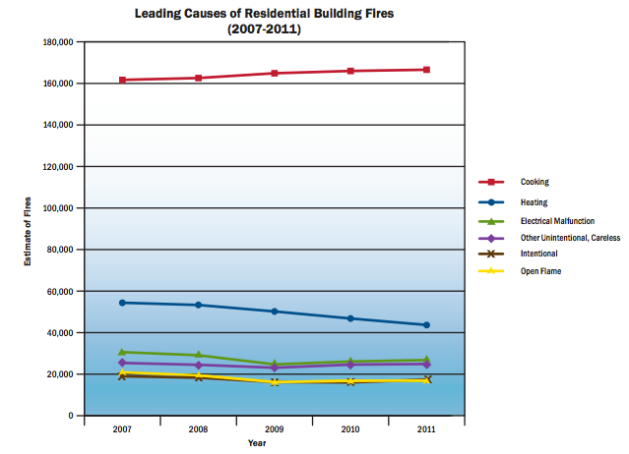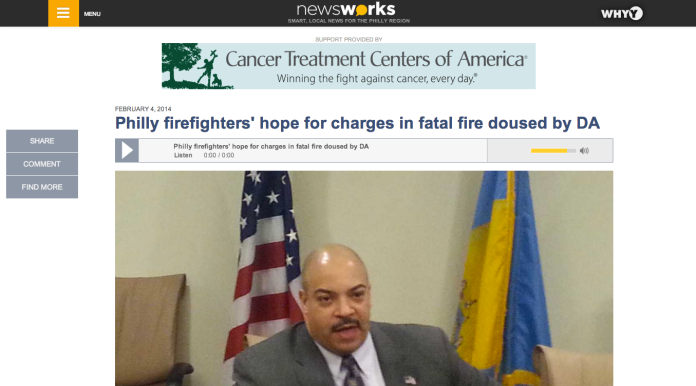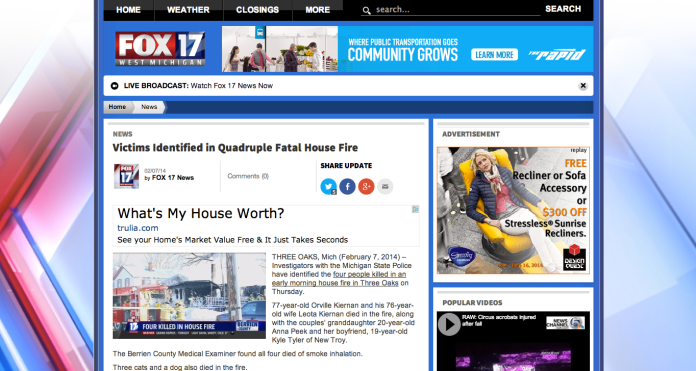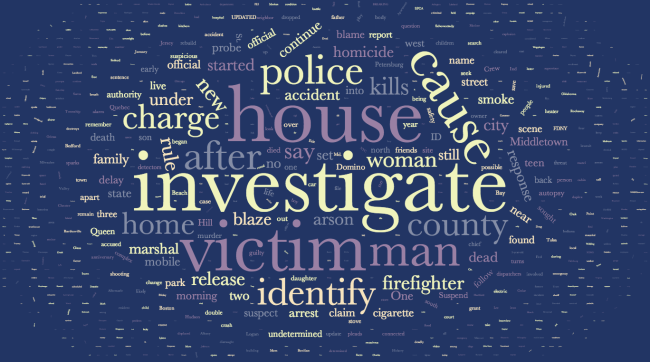By far, the leading cause of residential fires is cooking mishaps. Check out this chart below, reflecting estimates made by the U.S. Fire Administration.
As you can see, there are certainly other very significant factors that cause fires in the United States (even the lowest ones cause about 20,000 fires a year), but cooking fires are by and large the most common.
Reverting back to my aggregation of fatal fire headlines, let’s see if the media accurately reflected the causes of fire. Here are some key words, followed by the number of times they appeared in a fatal fire headline this semester.
Stove: 11. Kitchen: 7. Heater: 9. Furnace: 3. Electric/electrical: 12. Wire: 4. Cigarette: 21. Lighter: 4. Arson: 33. Set (as in: “the fire was set”): 28.
The data doesn’t exactly align. The biggest outlier seems to be the “intentional” category. The large numbers for “arson” and “set” might be due to the argument that non-accidents may merit more stories*, but they definitely allow for the possibility that media over-represents these types of fires, compared to how many fires are actually started this way.
*This could even be challenged. Even if a fire is started on accident, that does not mean it may not merit follow-up stories to relate it to a larger trend that could potentially be more dangerous than even intentional fires.
Another overachiever: “cigarette.” This seems to be a detail that news organizations love to include in the headline. Maybe it’s because it’s easy to create a detailed image with this one word. But, given my consistent findings that socioeconomics play a big role in fires, one has to at least play devil’s advocate and wonder if there isn’t some classism at work here as well. Smoking cigarettes is generally stereotyped as working-class behavior, and, though it would be near impossible to prove, one might wonder if that detail is included so the news organizations can pigeonhole the victims.
Of course, I run the risk of being a bit hypocritical here. I have said that news organizations should do a better job of contextualizing fires and reminding readers that they are more prevalent in lower socioeconomic scenarios. Perhaps the secret is walking the line between contextualizing and crudely stereotyping. To be honest, I don’t know exactly what the best way to do that is, but I think it’s something journalists should keep in mind.
Lastly, it seems like the “heating” category is somewhat underrepresented. Perhaps journalists need to be mindful of including those details in headlines as well. Not doing so could be harmful, because readers might not fully understand how much of a fire threat objects like space heaters can be.



